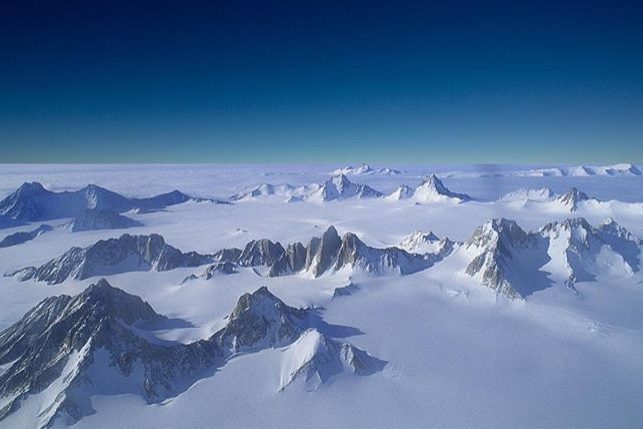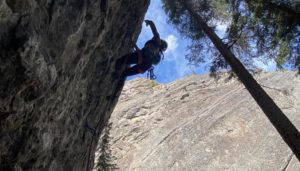Top Climbers Heading to Antarctica for Big Walls

At least two teams of top climbers are heading to Antarctica for some big wall climbing this austral summer season
One team consists of Anna Pfaff, Savannah Cummins, Conrad Anker, Cedar Wright, Jimmy Chin, Alex Honnold with assistance from Pablo Durana and Tay Keating.
Their exact objective isn’t known, but Wright posted on Instagram about the late 1990s expedition by Alex Lowe and Anker. Surely Anker has a number or possible objectives he took note of from his earlier trip.
Another Antarctica returnee is Leo Houlding, who has his eyes set on The Spectre in the Organ Pipe peaks of Gothic Range at the southern end of the trans-Antarctic mountains. As Houlding points out, it’s “probably the most remote mountain on earth.” He is going with Jean Burgun and Mark Sedon.
Houlding, 37, isn’t bringing a drill to add bolts and isn’t planning on fixing any ropes. About his decision, he said: “It greatly increases the difficulty, significantly reduces the certainty of success and makes the ascent far more complex and committing.”
They say their mission is as follows: “Antarctica will be reached aboard an Antarctic Logistics & Expeditions (ALE) flight from Punta Arenas, Chile to ALE’s logistics base, the Union Glacier Camp in the Ellsworth Mountains on 15th November 2017.
“A ski equipped Twin Otter aircraft will fly the team 600 kilometres south to ALE’s Theill Skiway fuel depot. After refuel the aircraft will fly to a drop off point at 88˚S, 110˚W, 300 kilometres towards the Gothic Mountains, the aircrafts maximum return payload range.
“For the next 69 days the team will be unsupported and self sufficient. A 20-day food & fuel depot for the return journey will be cached at the drop off point.
“Kites will be used to travel the remaining 350 kilometres to the Gothic Mountains. 20 days will be spent climbing first ascents and exploring the most remote mountains on Earth. All climbs will be made in Alpine style. No fixing rope, No drill & No bolts will be carried.
“The team will then kite 100 kms down the Scott Glacier to the Ross Ice shelf; the edge of the Antarctic continent. The return journey will require man-hauling uphill, into wind for 450 kilometres towards the South Pole back to their depot at the original drop off point.
“Favourable wind patterns can then be harnessed to kite a further 1000 kilometres to Hercules Inlet on the Ronne Ice shelf on the opposite edge of the continent. If conditions allow the team will attempt to go via the South Pole.
“A final kite / man-haul journey of 100 kms will bring the team back to the Union Glacier Camp returning from Antarctica late January 2018.” Follow along on their updated-daily website here.
The Spectre was discovered in December 1934 by the Byrd Antarctic Expedition geological party under Quin Blackburn. The name was suggested by Edmund Stump, leader of the United States Antarctic Research Program (USARP)-Arizona State University geological party in the Gothic Mountains in 1980 and 1981.
Edmund is brother to alpinist Mugs Stump, who died in 1992 falling into a crevasse on Denali. The two made the first ascent of the Spectre in the 1980/81 season.
Edmund wrote a book about the Transantarctic Mountains called The Roof At The Bottom Of The World. In it he talks about their Spectre ascent. You can read an excerpt here.


